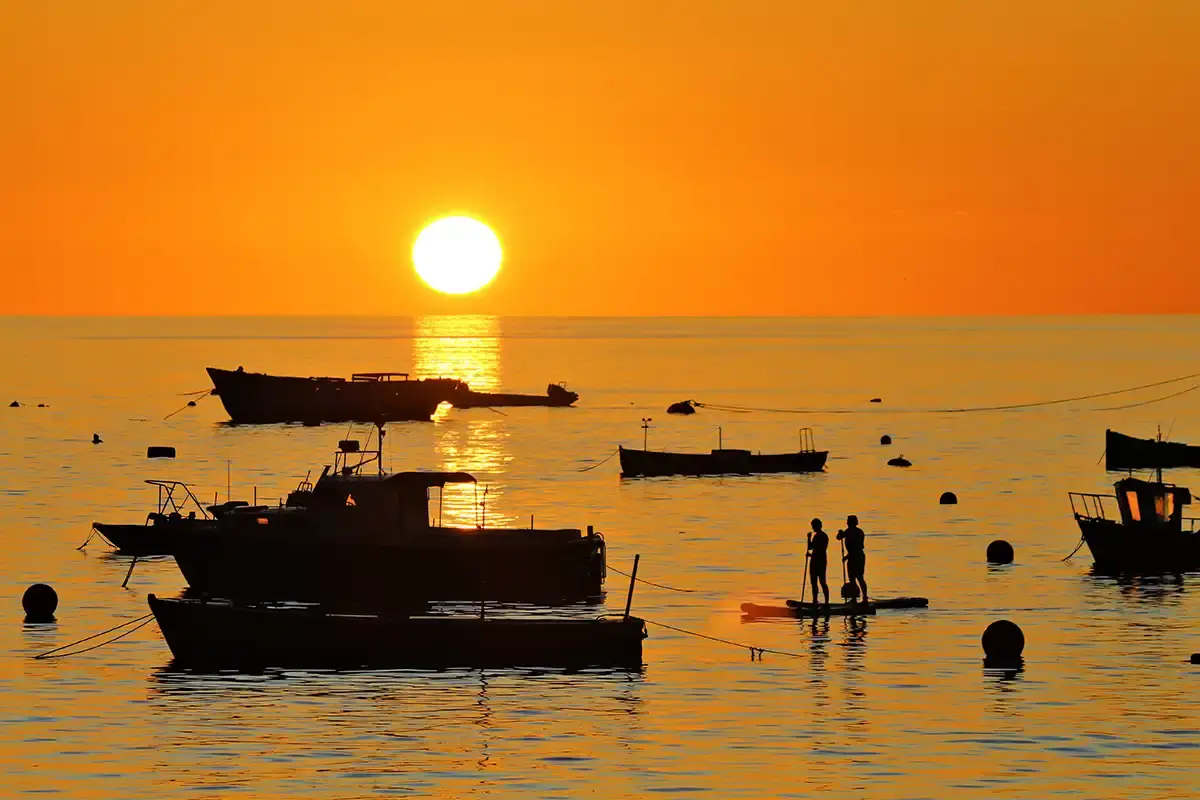

St Helena’s clear blue waters and sub-tropical climate make it a fantastic, year-round scuba diving destination, home to a number of endemic species and one of the most important seasonal whale shark gatherings in the world.
St Helena is one of the world’s most remote inhabited islands, located in the southern Atlantic Ocean some 1,200 miles distant from the African. Discovered by the Portuguese in 1502 and settled by the British in 1659, the island was once an important stopover for shipping on the trade routes from the east, but is now a growing attraction for globetrotting tourists – and scuba divers.
St Helena is a British Overseas Territory home to around 4,500 people, with an idyllic sub-tropical location that gives it one of the most vibrant and diverse landscapes imaginable, from grassy expanses evocative of North Wales and England’s Peak District, to dense forest and desolate, black volcanic landscapes, all crammed into an island less than 10 miles across.
Below the surface, its waters are virtually unblemished by the touch of human activity or industry. Much of the marine life has evolved in quiet isolation from the rest of the world meaning that many of the species found along its tiny coastline are endemic to St Helena.
A well-established and locally well-maintained Category VI Marine Protected Area ensures that they remain as undisturbed as possible.
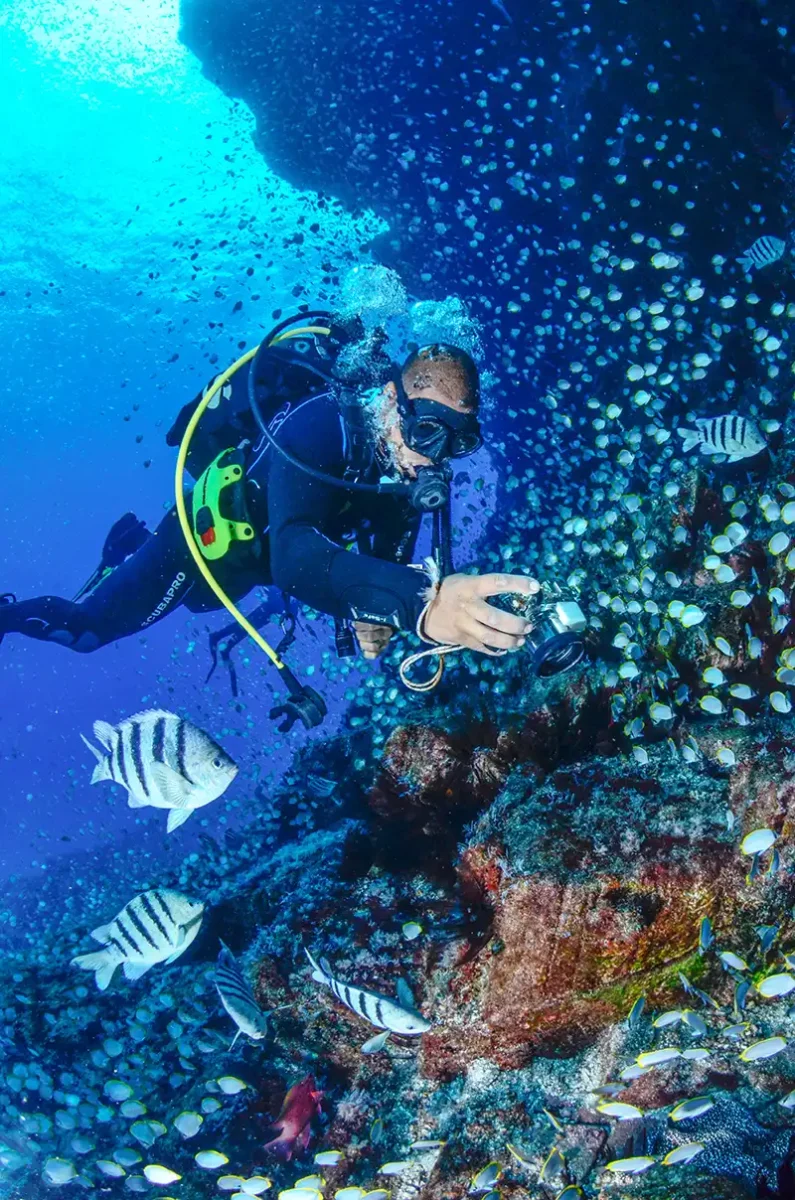
Scuba diving through the island’s pristine dive sites is placid and quite beautiful with clear blue visibility the norm – although this is the middle of the Southern Atlantic, so the occasional swell can muddy up the waters a little.
Most of the diving takes place on the leeward side of the island, sheltered from the strong currents of the South Atlantic, and can be enjoyed by recreational divers of all experience levels.
The absence of mass tourism means the only other people in the ocean may be several thousand miles away, and there’s little chance of bumping into anything other than the splendid array of wildlife that the island’s waters have to offer.
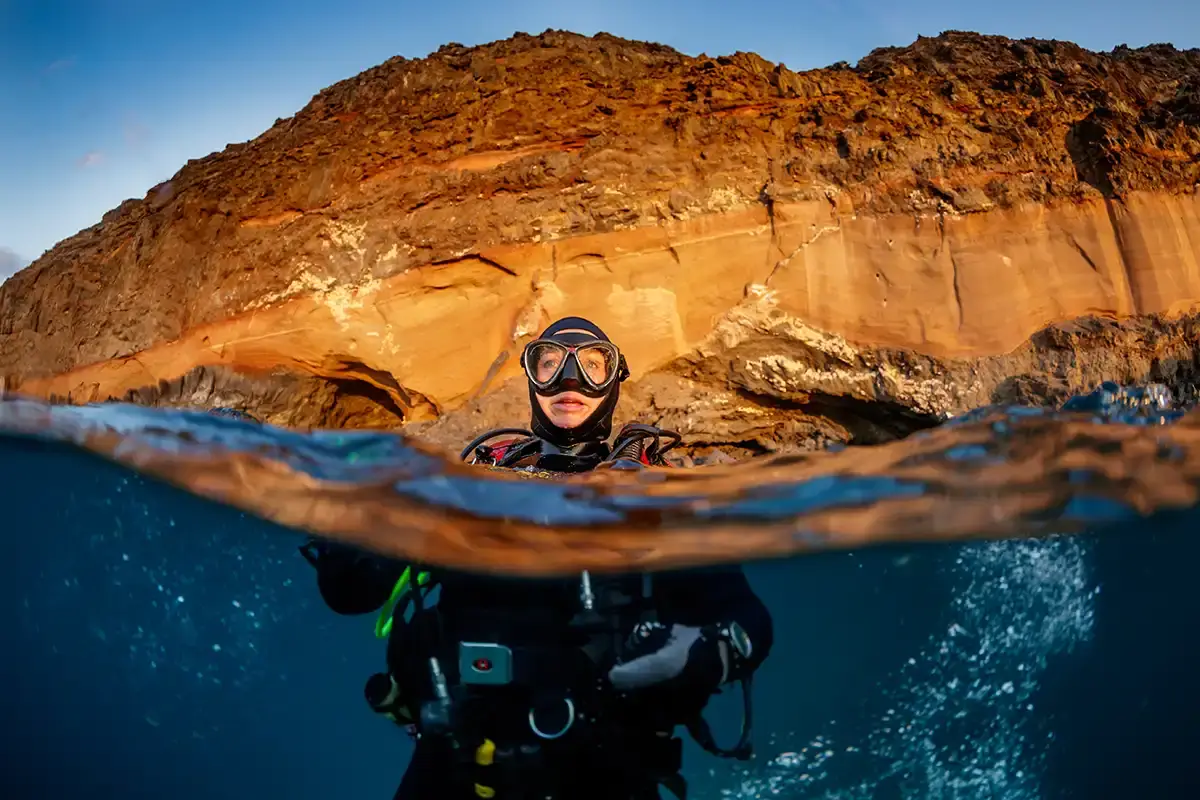
Marine protected area
The waters surrounding St Helena have been designated as a Category VI Marine Protected Area which is maintained by the islanders. Strict rules have been put in place to prevent damage to the local marine wildlife, particularly the seasonal aggregation of whale sharks. Every tour operator is specially trained to ensure that snorkellers have the best possible experience swimming with the gentle giants, while also ensuring the sharks remain protected.
There are at least 780 marine species that have so far been identified around St Helena, with 50 that are not found anywhere else in the world, including local favourites such as the St Helena butterflyfish, flameback angelfish and orange cup coral, all of which can be regularly spotted while diving.
There are plenty of larger animals that call the island home, including Chilean devil rays, which will often spend several minutes entertaining divers with close flybys and overhead passes. St Helena also has resident populations of pantropical spotted, bottlenose and rough-toothed dolphins; and humpback whales make spectacular displays for visitors during the second half of the year.
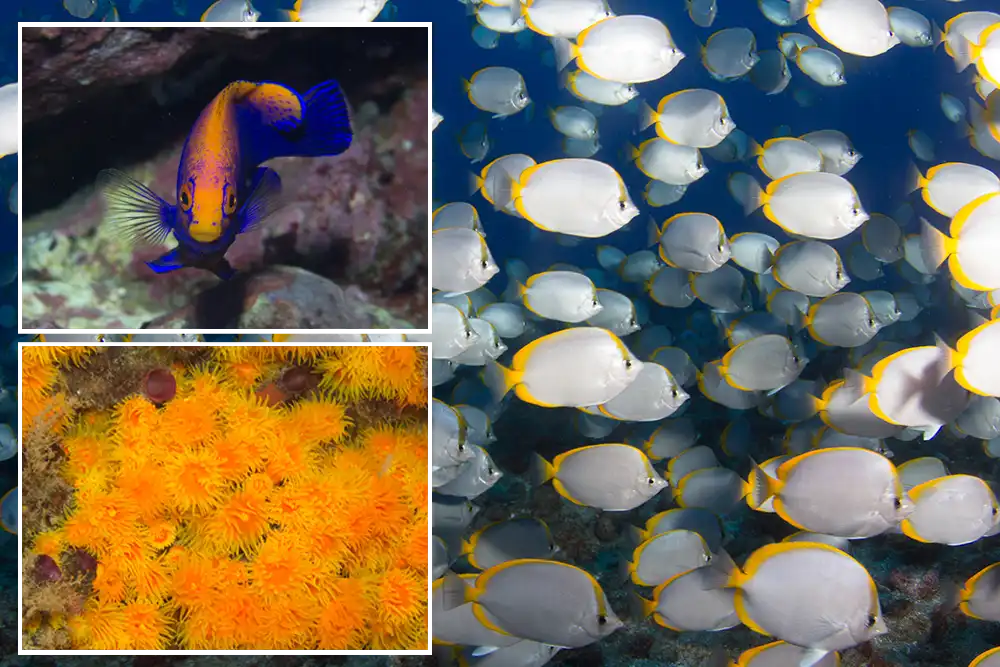
So important is St Helena’s role in ocean conservation that its Marine Protected Area has been officially recognised as a ‘Hope Spot’ by Sylvia Earle’s Mission Blue Foundation, making the island part of a global network of protected areas identified for their uniqueness, and the efforts of local communities in preserving ocean health.
Since 2016, St Helena has also been fortunate to be a part of the UK Government’s Blue Belt Programme, which supports the Overseas Territories with the protection and sustainable management of their marine estates. The programme has provided significant funding and capacity to St Helena to help with conservation of the area, which is nearly the size of France.
St Helena’s whale sharks
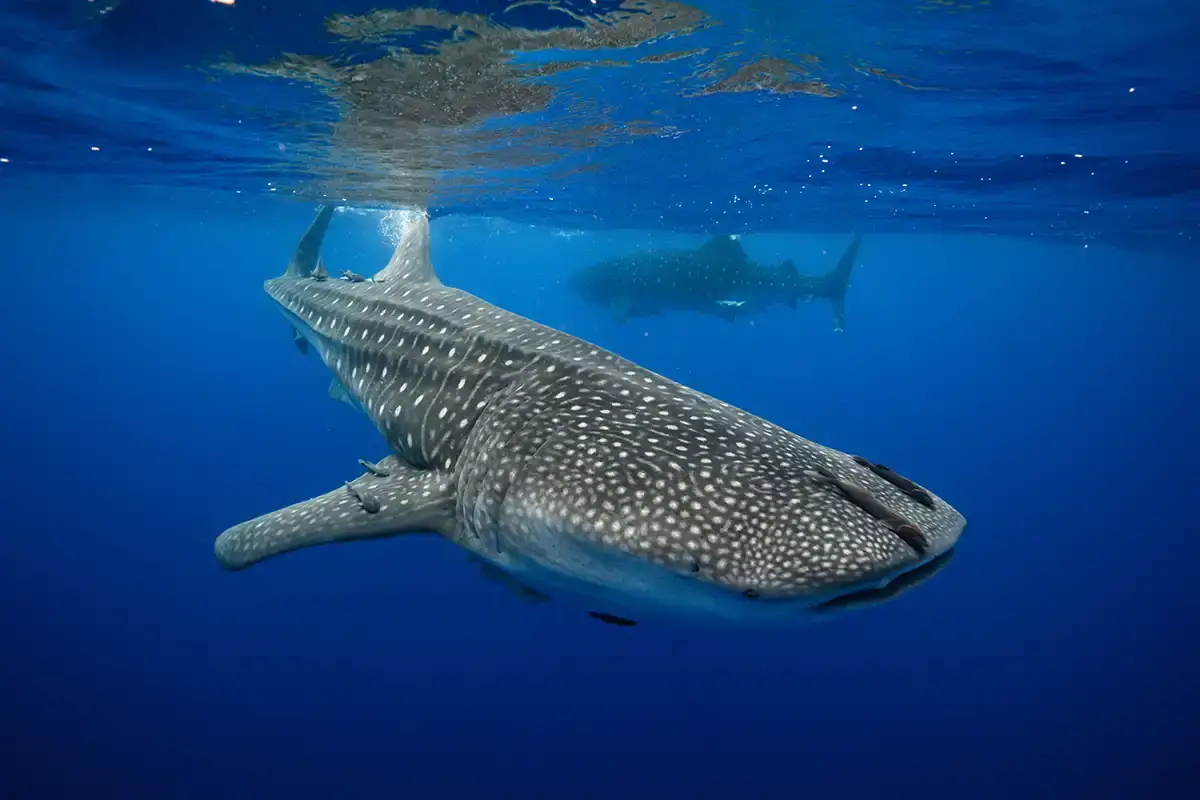
One of St Helena’s biggest marine life attractions is the annual gathering of whale sharks, which aggregate in numbers between December and March each year, with up to 30 individuals sometimes sighted on a single day.
Not only does the aggregation give visitors the opportunity to swim with fully-grown whale sharks, but it is one of the most important gatherings in the world; one of the few places where adult male and female whale sharks come together in almost equal numbers, presumably to find a mate.

Shipwrecks
As one would expect of a remote Atlantic island, there are a number of shipwrecks scattered around St Helena. Eight are accessible to divers, including the Papanui, the wreck of a coal ship which lies right in the shallow waters of Jamestown’s harbour and is as accessible to snorkellers as it is to divers.
More experienced divers will want to visit the RFA Darkdale, an oil tanker sunk by a German torpedo during the Second World War. The ship’s maximum depth of 45m means that dives are limited to exploring the inverted hull, but Darkdale’s status as a war grave – a monument to the 41 sailors lost during the attack sits proudly on the James Bay seafront – and the possibility of seeing larger pelagic fish such as tuna and wahoo make it a must-dive for visitors.

The Witte Leeuw (White Lion) is the oldest diveable wreck around St Helena, a former cargo ship said to be carrying spices and diamonds which was sunk by the Portuguese in 1613. The wooden hull has long since rotted away, although the anchor and some of the 400-year-old cannon remain. The diamonds Witte Leeuw was reported to have been carrying were never found, leading some divers to hope they might strike it lucky when they visit!
Other wrecks, such as the Bedgellet, Atlantic Rose and Frontier are all well preserved and sunk in fairly shallow water, making them great dives for both experienced and novice divers visiting their first wrecks.
St Helena topside
There is much to see and do and explore when not diving St Helena. Just walking through some of the island’s vastly different landscapes is an epic adventure all by itself. The St Helena Nature Conservation Group has created a series of ‘Post Box Walks’ which cover most of the island and vary in difficulty from fairly easy ambles to rocky paths for experienced walkers only. At the end of each is a Post Box with a collectable stamp – there are 21 in total – and guided walks through each are also available through the tourist office in Jamestown.
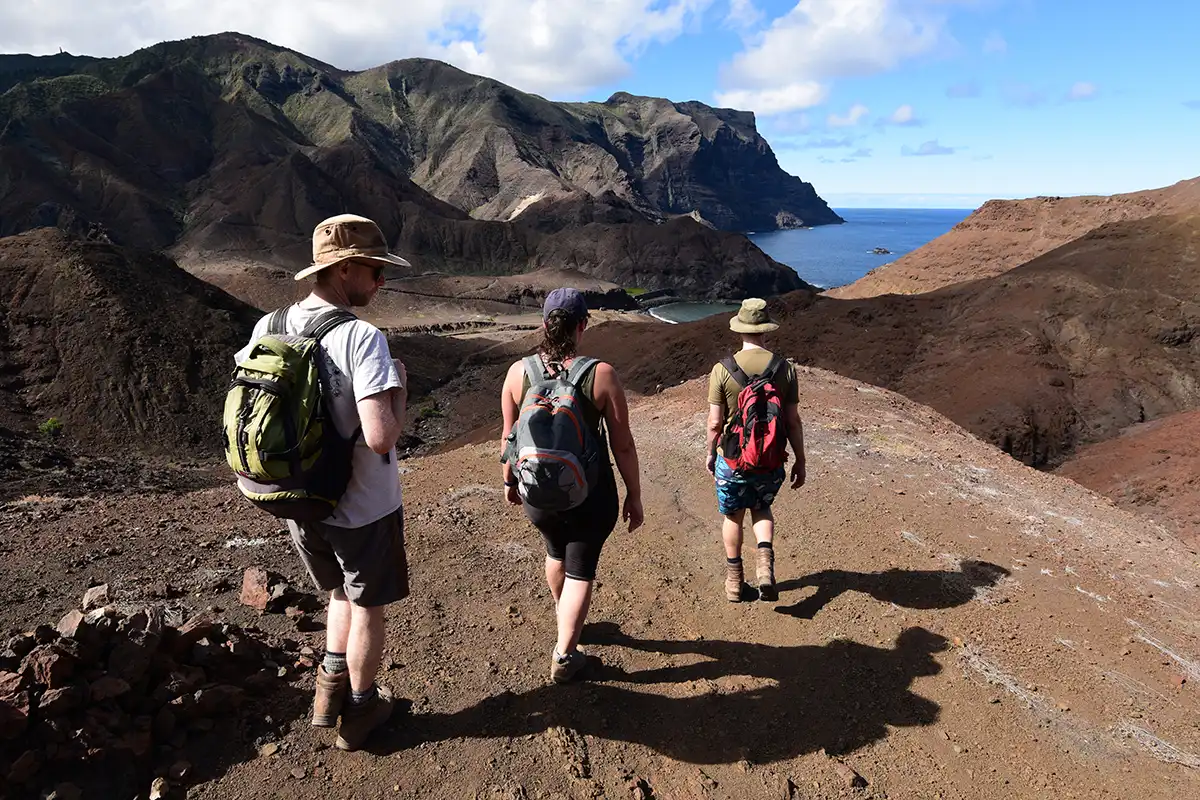
St Helena is an island steeped in history, with several forts to visit, including the famous Ladder Hill Fort, which can be reached by walking the 699 steps of Jacob’s Ladder from Jamestown – although it’s possible to drive to the fort for those with already tired legs, and standing at the top is a must-see experience.
The island was also the home in exile of Napoleon Bonaparte in the last years of his life. A visit to Longwood House, his main place of residence, makes for an enjoyable afternoon of history, and every visitor must make a stop at Plantation House to meet the island’s most famous resident – Jonathan, a Seychelles giant tortoise who is now 192 years old, earning him the Guinness World Record for oldest living land animal on the planet.
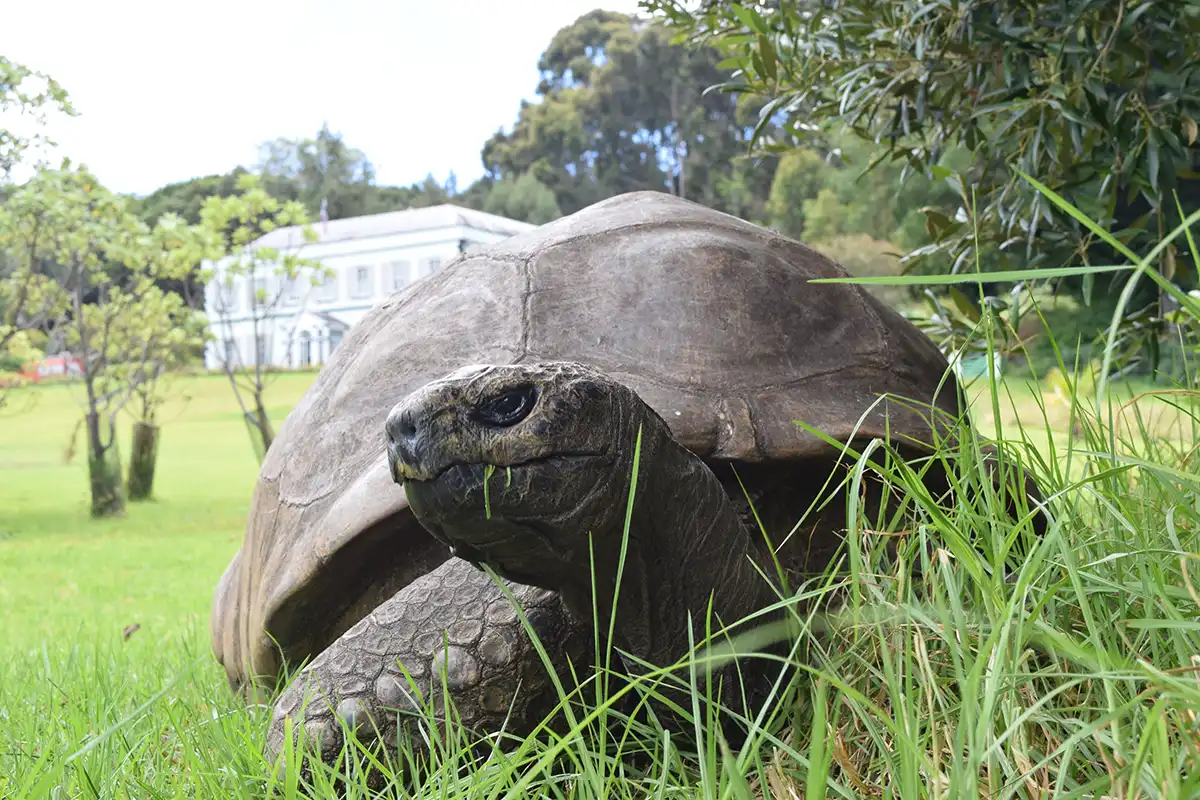
There is much more to the island, from sampling the local cuisine (you must try the ‘Plo’!) to watersports activities, exploration and birding – St Helena provides shelter and nesting habitats for several species of seabird, and is home to the delightful St Helena plover, an endemic species known locally as the wirebird.
By night, stargazing from one of the most remote locations in the world, with virtually no light pollution, is one of the most amazing astronomical experiences it is possible to have without actually travelling into space.
St Helena scuba diving and tour packages

Untouched St Helena
Dive travel specialists, Dive Worldwide, offer an ‘Untouched St Helena‘ diving package as a 12-day adventure departing from the UK via Johannesburg, South Africa. The itinerary features a seven-night stay on the island with a five-day dive package covering 10 dives at a variety of sites, with the possibility of marine encounters with dolphins, and – depending on the season – humpback whales and whale shark sightings. Prices start at £3,095 per person, including flights, accommodation, and transfers.
Dive & Discover St Helena
In February 2025, Dive Worldwide is offering a special ‘Dive & Discover St Helena‘, offering nine nights on the island as a group trip with renowned cameraman and marine conservationist Danny Copeland for those who wish to ‘uncover the mysteries of St Helena with experts and like-minded individuals’. Prices start at £4,645 per person including flights, accommodation, and transfers.

For more information about St Helena tourism visit www.sthelenatourism.com
